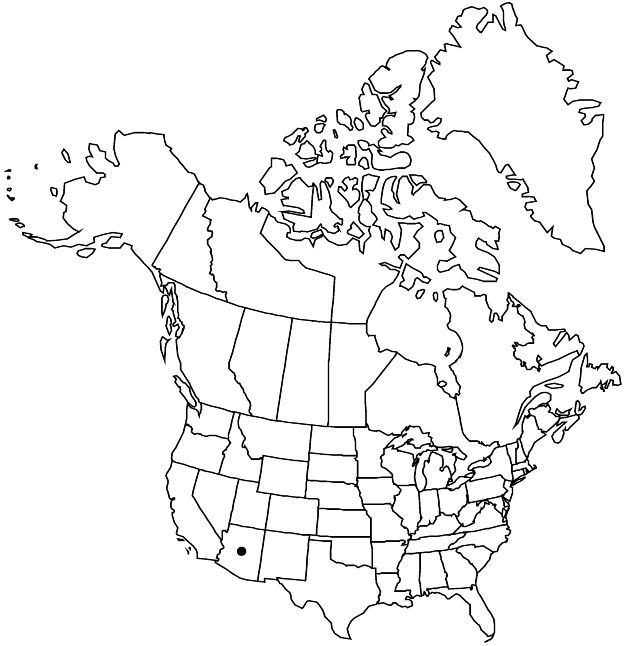Croton sonorae
in W. H. Emory, Rep. U.S. Mex. Bound. 2(1): 194. 1859.
Shrubs, 8–16 dm, monoecious. Stems much-branched distally, canescent when young, becoming glabrate. Leaves sometimes clustered near inflorescences; stipules subulate, to 1 mm; petiole 0.4–1 cm, 1/4–1/2 leaf blade length, glands absent at apex; blade ovate to broadly lanceolate, 0.8–4 × 0.6–2 cm, base cuneate to rounded or cordate, margins entire, not undulate, ciliate-glandular, apex acute to acuminate, abaxial surface pale green, sparsely whitish stellate-hairy, adaxial surface darker green, glabrate. Inflorescences bisexual or staminate, racemes, 2–14 cm, staminate flowers 10–25, pistillate flowers 3–5(–8). Pedicels: staminate 1–1.5 mm, pistillate 1–4 mm. Staminate flowers: sepals 5, 1–1.5 mm, abaxial surface sparsely stellate-hairy; petals 5, lanceolate, 1.5–2 mm, abaxial surface glabrous except margins villous; stamens 13–16. Pistillate flowers: sepals 5, equal, 1.5–2 mm, margins entire, apex incurved, abaxial surface sparsely stellate-hairy; petals papillae, 0.5 mm; ovary 3-locular; styles 3, 2–3 mm, 2-fid, terminal segments 6. Capsules 7–8 × 5–6 mm, smooth; columella apex with 3 rounded, inflated lobes. Seeds 6–7 × 3–4 mm, shiny.
Phenology: Flowering Jul–Sep.
Habitat: Rocky slopes, desert scrub.
Elevation: 500–1100 m.
Distribution

Ariz., Mexico (Baja California, Sonora).
Discussion
Croton sonorae is widely distributed in Mexico and extends into southern Arizona in Maricopa, Pima, and Pinal counties.
Selected References
None.